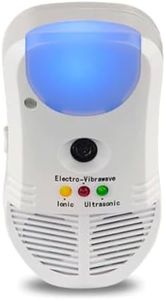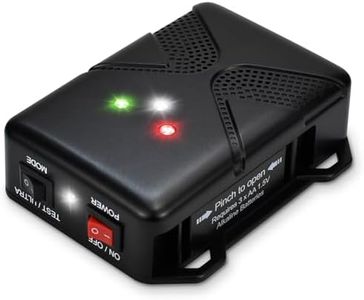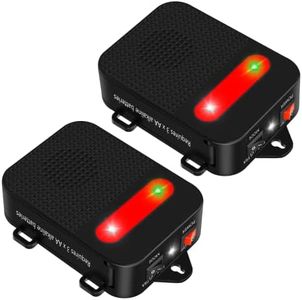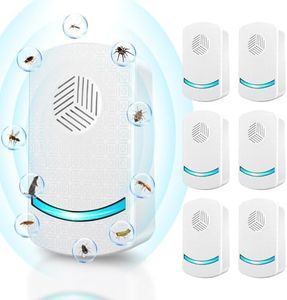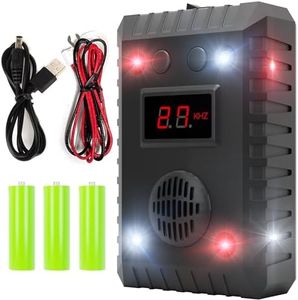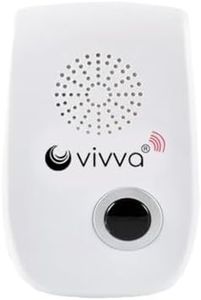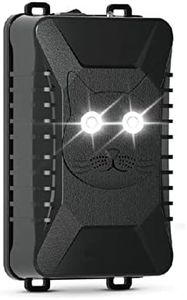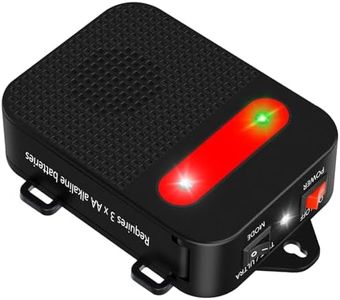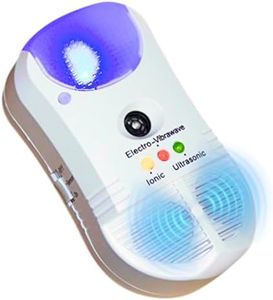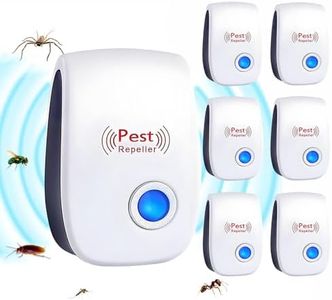We Use CookiesWe use cookies to enhance the security, performance,
functionality and for analytical and promotional activities. By continuing to browse this site you
are agreeing to our privacy policy
10 Best Ultrasonic Rodent Repellers
From leading brands and best sellers available on the web.Buying Guide for the Best Ultrasonic Rodent Repellers
When choosing an ultrasonic rodent repeller, your goal is to pick a device that will be effective in the space you need to protect while also fitting your specific needs and environment. These devices use high-frequency sound waves to deter rodents without chemicals or traps, making them a humane and clean choice. However, not all ultrasonic repellers are equally effective, and it's important to understand the features that determine how well they work for your space. To make a smart purchase, you should pay attention to key characteristics like coverage area, frequency range, safety, power source, and extra features.Coverage AreaCoverage area tells you how much space the repeller can handle, typically measured in square feet or meters. This is important because the ultrasonic sound waves don’t travel through walls or solid objects. Devices with small coverage areas work well for single rooms or small apartments, while those with larger coverage areas are better for big open spaces like garages or basements. To choose the right one, measure your space and make sure the device’s coverage is equal to or greater than that area. If you have lots of small rooms, you might need more than one device to get full protection.
Frequency RangeFrequency range is the spectrum of ultrasonic sound that the device emits, usually measured in kilohertz (kHz). This matters because different pests respond to different frequencies, and only some frequencies will actually bother rodents. Devices with a fixed frequency may be effective for certain types of rodents but not all, while those with adjustable or variable frequencies are more versatile and can prevent rodents from becoming used to the sound. When choosing, consider an adjustable frequency model if you want to target a variety of pests or if you plan to use the device for a longer period.
Safety for Humans and PetsSafety for humans and pets ensures that the device won’t bother you or your animals. Most ultrasonic devices are safe for people because the sound is above the range of human hearing. However, some pets—such as rabbits, hamsters, or certain dog breeds—might hear higher frequencies and could be affected. If you have small mammals as pets, check the safety information closely; otherwise, for households with only humans or common pets like dogs and cats, there is usually minimal risk.
Power SourcePower source describes how the device gets its energy, either from plugging into an electrical outlet or using batteries. Plug-in models are convenient for continuous use in places with power outlets, while battery-powered ones are useful for garages, sheds, or areas without easy access to electricity. Decide where you want to place the device and check if there’s a convenient power outlet nearby, or else choose a model with a reliable battery system.
Extra FeaturesExtra features may include things like night lights, motion sensors, or indicator lights showing that the device is working. While not strictly necessary, these can add convenience or provide peace of mind. For example, an indicator light lets you know the device is on, while a night light can help in hallways or basements. Consider your personal preferences and the characteristics of your space when deciding if any of these added features would be useful for you.
